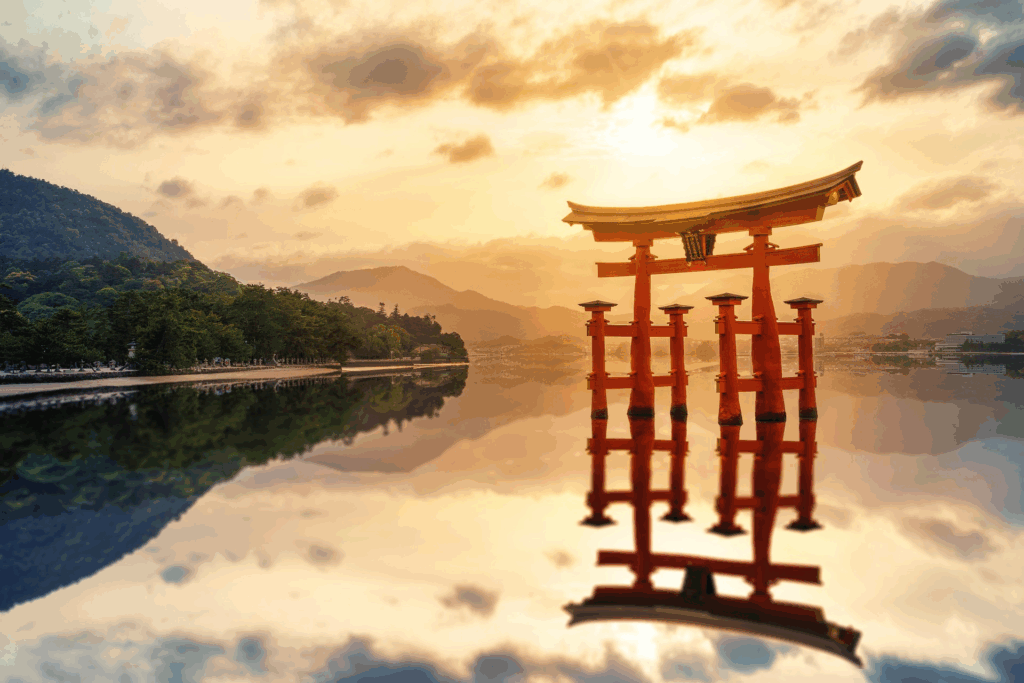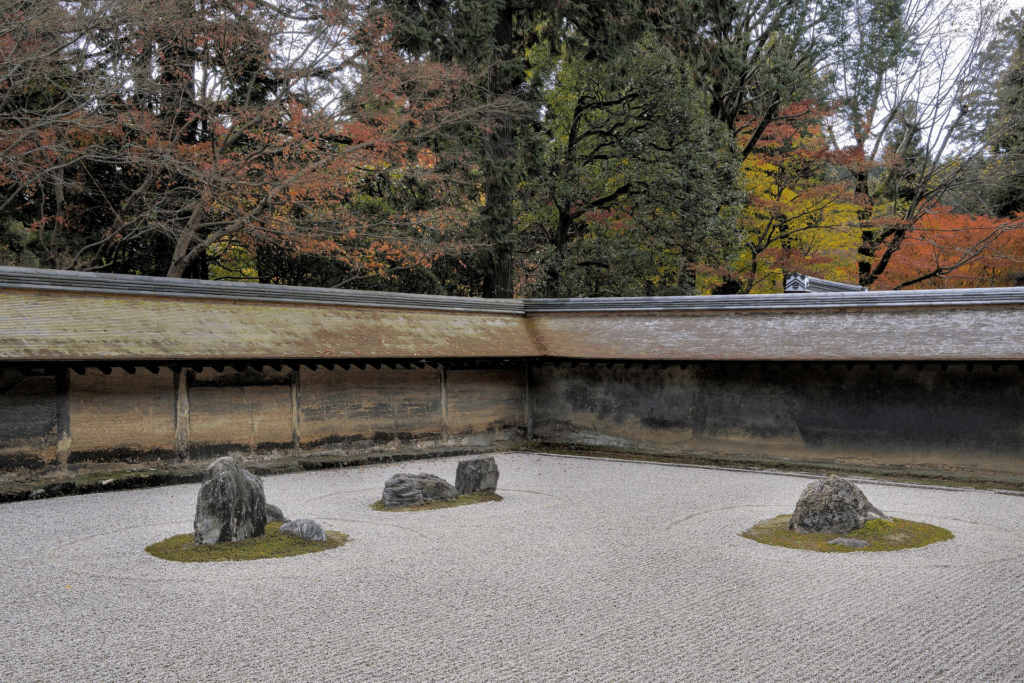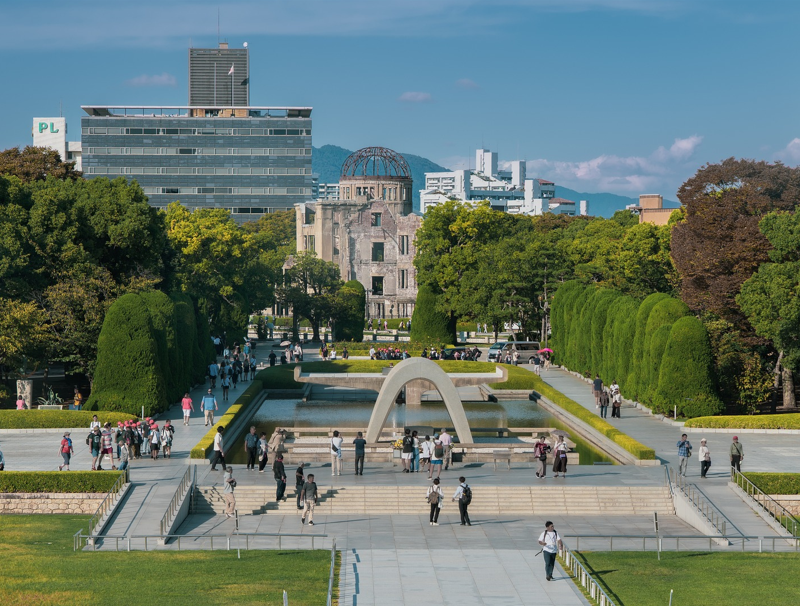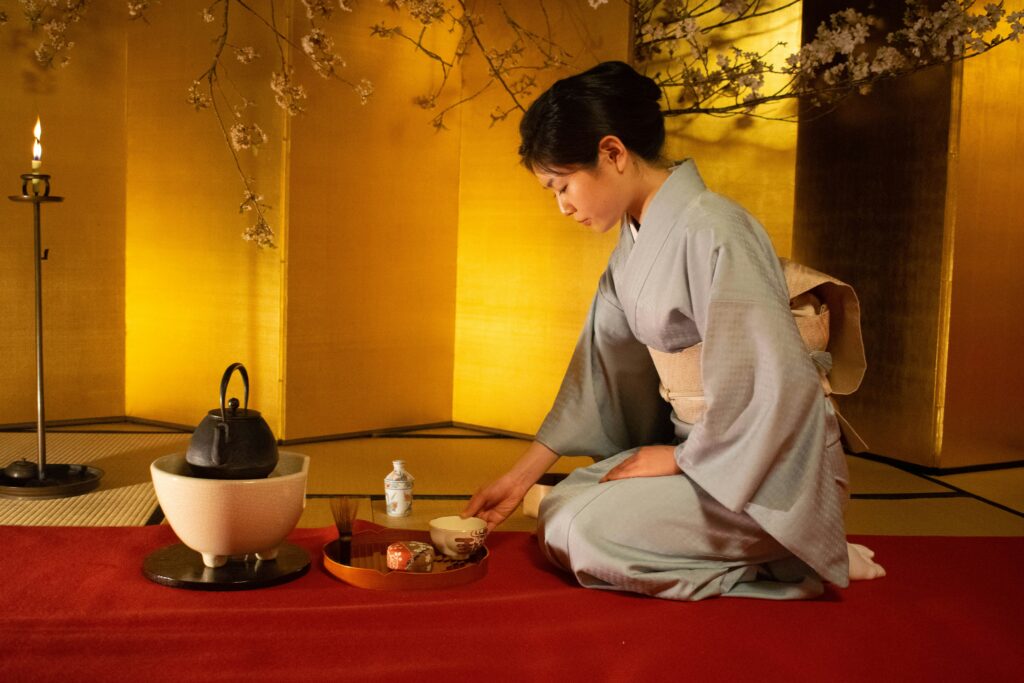
When the tide recedes, the great vermilion torii gate stands silently upon the sand. As the waters return, its reflection melts into the sea—until it seems as though the ocean itself is embracing it. This torii is more than an architectural wonder; it is a sacred threshold, a bridge between the divine and the human, a symbol of Japan’s harmony between nature and faith.
As the ferry crosses the Seto Inland Sea toward Miyajima, a soft breeze brushes your face, carrying the scent of salt and nostalgia. The torii on the horizon is only a small red mark against the blue, yet somehow, your heart already feels close to it. Time flows differently here—between tides, between day and night—the island remains serene and still. Visitors pause, take photos, whisper prayers, and try to sense the invisible current flowing between the sea and the gate.
The Island Where the Divine Dwells
Miyajima is not merely an island where gods reside—it is the god itself. Here, nature is sacred. The shrine is not built upon the mountain but along the shore, its entrance—the torii—rising from the sea. Long ago, pilgrims would approach by boat, passing through the gate as they entered the island of the divine. This was a journey not just across water, but across worlds—from the ordinary to the pure.
Enclosing the Divine, Releasing the Divine
In Western architecture, temples are homes for gods—sacred spaces enclosed by stone, separating the eternal from the mortal. But in Miyajima, divinity is not confined within walls; it lives in the island itself. To “enshrine” here does not mean to enclose, but to open. The shrine, floating upon the sea, is like a veranda between heaven and earth, where gods and people meet. The divine appears and disappears with the rhythm of the tide—this ebb and flow is itself a prayer, the essence of Japan’s spiritual heart.
Taira no Kiyomori — The Prayer and the Fall
Miyajima’s glory began in the late 12th century, when Taira no Kiyomori—the first samurai to rule Japan, a 12th-century military leader who rose to political power and shaped the cultural landscape of his time—devoted himself to this sacred island. A warrior who reached the imperial court’s summit, yet also the last heir of aristocratic grace, Kiyomori brought the beauty of the capital to the sea. The shrine’s elegant pillars reflected upon the water like a floating city of light—a fleeting vision of paradise. Yet within its splendor, a sense of impermanence lingered. Perhaps Kiyomori, at the height of power, already understood the transience of all things.
The Heike Nōkyō — Prayers in Gold and Light
Kiyomori’s offering, the the Heike Nōkyō (Heike Sutras)—a set of sacred scrolls commissioned by the Heike clan, blending Buddhist devotion with aristocratic artistry, was a prayer made tangible—a set of scrolls lavishly decorated with gold and silver leaf, encased in vividly colored illustrations. Within them, faith and desire, enlightenment and ambition intertwine. Gold reflects the wisdom of the Buddha; vermilion burns with human passion. Contradictions coexist, and beauty is born from their tension. This is the Japanese sense of faith—truth found within impermanence. The shrine itself mirrors this: vermilion pillars glowing at high tide, sinking gently into the sea at low. Splendor and fragility, longing and serenity—all breathe in the same light.
The Aesthetics of Decline — Echoes of the Heike
The fall of the Heike clan is one of Japan’s deepest cultural memories. The opening of The Tale of the Heike—a classic Japanese epic chronicling the rise and fall of the Heike clan—tells of this fate:
“The sound of the Gion Shōja bells echoes the impermanence of all things; the color of the sal trees reveals that the prosperous must decline.”
This sound still resonates in the Japanese soul a thousand years later. “All who flourish must fade”—not as tragedy, but as the natural breath of the world. The shrine remains beautiful because its builders understood this truth. Beauty is not found in eternity, but in the prayer of those who know that all things end.
The Beauty Born of Tragedy
The beauty of Miyajima is the beauty born from awareness of impermanence. It recalls, perhaps, the dreamlike loneliness of Neuschwanstein Castle—yet with a profound difference. That castle rejected reality; this shrine accepts it. What Kiyomori left behind was not a fortress of stone, but a prayer floating upon water. To see beauty not despite decay, but within it—that is Miyajima’s quiet philosophy.
Eternity Within Change
At dusk, the torii once again dissolves into the rising tide, its outline fading into twilight. Yet there is no sorrow in its disappearance. Its vanishing is itself the island’s beauty. Fragility is not weakness—it is the strength to accept change and find grace within it. The tide ebbs, flows, and returns again, each time reshaping the gate’s reflection. In that endless rhythm lies an eternal dialogue between people, nature, and the divine.
In the End
The shrine floating upon the sea is more than architecture. It is a living form of communion between humanity and nature—a place where prayer takes shape. The divine is not distant. It lives in the scent of salt in the air, in the sound of waves against the pillars, and within the quiet hearts of those who gaze upon this moment.
This article may contain affiliate links. For details, please see our Affiliate Disclosure.


